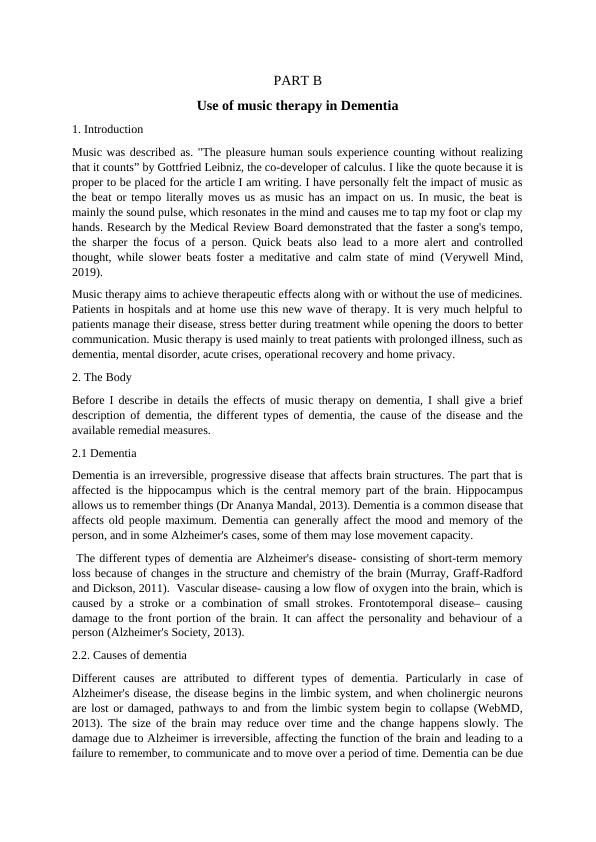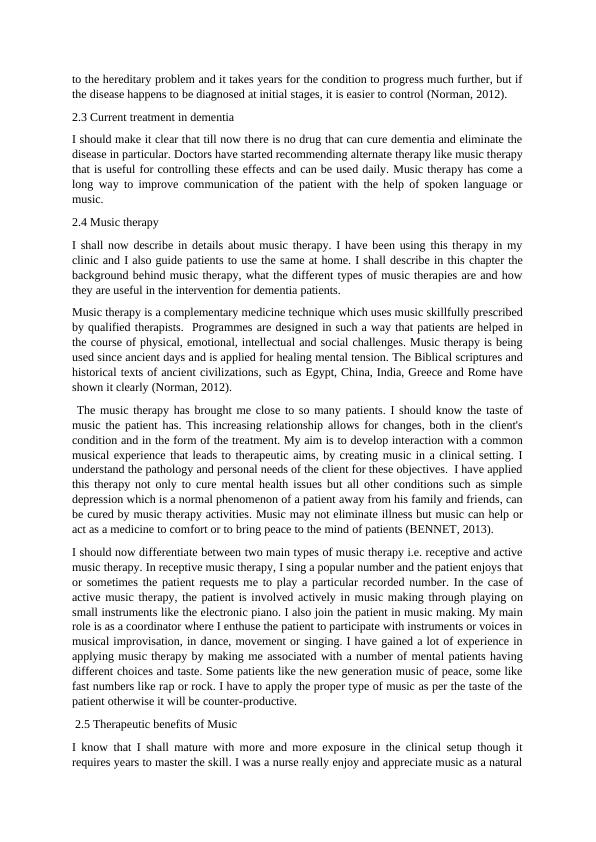Use of Music Therapy in Dementia - Benefits and Types
Undertake professional experience placement, choose an individual for care, gather information on psychological factors, pathophysiology, nursing management, and pharmacological interventions. Written report requires examining one aspect of nursing care provided to the individual.
6 Pages2514 Words174 Views
Added on 2022-11-18
About This Document
This article discusses the use of music therapy in dementia patients. It explains what dementia is, the different types of dementia, the causes of the disease, and the available remedial measures. The article also describes music therapy, its different types, and how it can be useful in the intervention for dementia patients. It concludes by discussing the benefits of music therapy and how it can help improve communication, reduce anxiety and fear, and stimulate hemispheric specialization.
Use of Music Therapy in Dementia - Benefits and Types
Undertake professional experience placement, choose an individual for care, gather information on psychological factors, pathophysiology, nursing management, and pharmacological interventions. Written report requires examining one aspect of nursing care provided to the individual.
Added on 2022-11-18
ShareRelated Documents
End of preview
Want to access all the pages? Upload your documents or become a member.
Use of Music Therapy in Dementia
|6
|1866
|57
Use of Music Therapy in Dementia: A Case Study
|2
|993
|159
Use of Music Therapy in Dementia
|4
|1031
|77
Alzheimer Disease Project PDF
|14
|3441
|143
Alzheimer’s Disease Case Study 2022
|7
|2087
|21
Investigating the Use of BAN2401 (A? mAb) in Treatment of Alzheimer Disease
|10
|3149
|197



